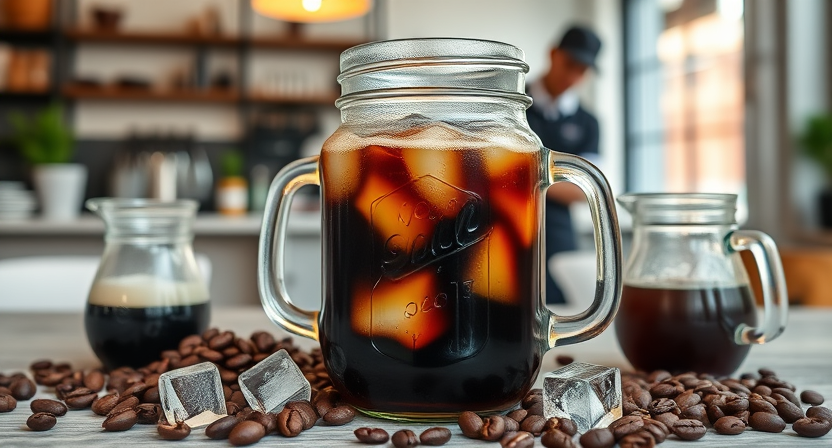Benefits of Cold Brew Coffee

Cold brew coffee offers a smoother and less acidic taste compared to hot-brewed coffee. This can be particularly appealing to those with sensitive stomachs or acid reflux issues. The slow brewing process of cold brew also brings out different flavor profiles from the coffee beans, resulting in a more mellow and balanced taste.
Another benefit of cold brew coffee is its versatility in serving options. It can be enjoyed hot or cold, depending on your preference and the weather. Cold brew coffee can also be easily customized with milk, cream, syrups, or spices to create your perfect cup of coffee. This adaptability makes it a popular choice for coffee lovers looking for a refreshing yet flavorful drink.
Difference Between Cold Brew and Iced Coffee

Cold brew coffee and iced coffee are two popular cold beverages that often get confused due to their similarities in appearance. However, their brewing methods and flavor profiles differ significantly. Cold brew coffee is made by steeping coarsely ground coffee beans in cold water for an extended period, typically 12-24 hours. This slow extraction process results in a smooth, rich, and less acidic coffee concentrate that is usually diluted with water or milk before serving.
On the other hand, iced coffee is brewed using a traditional hot brewing method where hot water is used to extract the coffee flavors quickly. The brewed coffee is then cooled down and poured over ice, often resulting in a more intense and acidic taste compared to cold brew. Additionally, while iced coffee is typically served immediately after brewing, cold brew can be stored in the refrigerator for an extended period without losing its freshness.
Health Benefits of Cold Brew Coffee

Cold brew coffee offers several potential health benefits that make it an attractive choice for coffee lovers. Due to its unique brewing process, cold brew coffee is less acidic than hot brewed coffee, which can be gentler on the stomach and less likely to cause acid reflux or heartburn for some individuals. Additionally, the lower acidity level in cold brew coffee may also be beneficial for those with sensitive stomachs or digestive issues.
Furthermore, cold brew coffee contains high levels of antioxidants, which are compounds that help protect the body against damage from free radicals. Antioxidants have been linked to a reduced risk of chronic diseases, such as heart disease, cancer, and diabetes. By incorporating cold brew coffee into your routine, you may be able to increase your antioxidant intake and support overall health and well-being.
• Cold brew coffee is less acidic than hot brewed coffee, making it gentler on the stomach
• Lower acidity may reduce the likelihood of acid reflux or heartburn for some individuals
• Beneficial for those with sensitive stomachs or digestive issues
• High levels of antioxidants in cold brew coffee help protect the body against damage from free radicals
• Antioxidants have been linked to a reduced risk of chronic diseases such as heart disease, cancer, and diabetes
• Incorporating cold brew coffee into your routine can increase antioxidant intake and support overall health
Choosing the Right Coffee Beans for Cold Brew

When it comes to making a delicious batch of cold brew coffee, selecting the right coffee beans plays a crucial role in achieving the desired flavor profile. Opting for coarsely ground coffee beans is essential for cold brew as it allows for a longer extraction time without resulting in bitterness. Arabica beans are a popular choice for cold brew due to their smooth and mellow flavor profile, which pairs well with the cold brewing method. On the other hand, if you prefer a stronger and more robust taste, experimenting with a blend that includes some Robusta beans might be worth considering.
In addition to the type of beans, considering the roast level is also important when choosing coffee beans for cold brew. While light to medium roasts are typically favored for their bright and fruity notes, some coffee enthusiasts enjoy the depth of flavor that a dark roast can bring to cold brew. Ultimately, the best coffee beans for cold brew are subjective and depend on individual preferences, so don’t be afraid to explore different options to find the perfect blend that satisfies your taste buds.
The Best Water to Coffee Ratio for Cold Brew

For those looking to achieve the perfect balance of flavor and strength in their cold brew coffee, getting the water to coffee ratio right is crucial. While preferences may vary, a common starting point is using a ratio of 1:4. This means for every cup of coarsely ground coffee, you would add four cups of cold water.
For a more concentrated cold brew, you can adjust the ratio to 1:3 or even 1:2, depending on your taste preferences. Remember, experimenting with different ratios can help you tailor your cold brew to suit your desired strength and flavor profile. It’s all about finding what works best for you.
Grinding Coffee Beans for Cold Brew

To ensure a successful cold brew coffee extraction, the process starts with grinding the coffee beans to the right consistency. The grind size for cold brew should be coarse, similar to breadcrumbs or coarse sea salt. This larger grind size helps in slowing down the extraction process, resulting in a smoother and less acidic brew. It’s essential to use a burr grinder for more consistent results compared to blade grinders. Adjusting the grind size can also impact the brewing time and overall flavor profile of the cold brew.
Experimenting with different grind sizes can help you tailor the flavor of your cold brew to your preferences. Keep in mind that a finer grind may result in a stronger brew but can also lead to over-extraction and increased bitterness. On the other hand, a coarser grind may produce a milder flavor but could lack depth. Finding the right balance is key to achieving a well-rounded and satisfying cold brew coffee.
The Brewing Process of Cold Brew Coffee

To start the brewing process of cold brew coffee, you’ll first need coarse coffee grounds and cold water. The ratio typically used is one cup of coffee grounds to four cups of water. Combine the coffee grounds and water in a large container, stirring gently to ensure the grounds are fully saturated. Cover the container and let it steep at room temperature for about 12-24 hours, depending on your desired strength.
Once the steeping time is up, strain the coffee mixture through a fine-mesh sieve or a coffee filter to remove the grounds. You can repeat the straining process to ensure a smooth, grit-free cold brew concentrate. The resulting liquid can be diluted with water or milk to your liking and served over ice. Enjoy the rich and smooth flavor that cold brewing provides, perfect for a refreshing pick-me-up on a hot day.
How to Make Cold Brew Concentrate

To make cold brew concentrate, you’ll need a coarsely ground dark roast coffee and cold water. Start by combining 1 cup of coffee grounds with 4 cups of cold water in a large jar or pitcher. Stir gently to ensure all the grounds are saturated with water. Cover the container with a lid or plastic wrap and let it steep at room temperature for 12-24 hours.
After the steeping process is complete, strain the mixture through a fine-mesh sieve or a cheesecloth-lined strainer into a clean container. This will separate the coffee grounds from the liquid concentrate. You can further filter the concentrate using a coffee filter to remove any remaining sediment. The resulting cold brew concentrate can be stored in the refrigerator in a sealed container for up to two weeks. When you’re ready to enjoy a refreshing cup of cold brew, simply dilute the concentrate with water, milk, or your preferred milk alternative to your desired strength and taste.
Storing Cold Brew Coffee

When it comes to storing cold brew coffee, it’s essential to keep it sealed in airtight containers to maintain its freshness and prevent any unwanted odors from seeping in. Glass containers are preferred over plastic ones, as they are less likely to absorb any lingering flavors and are easier to clean. Make sure to store your cold brew coffee in the refrigerator to extend its shelf life and preserve its smooth flavor profile.
It’s best to consume your cold brew coffee within 2 weeks of making it for optimal taste. If you find that you have leftover cold brew, you can also freeze it in ice cube trays for future use in iced coffee or cold brew cocktails. Remember to thaw the frozen cold brew cubes in the refrigerator before using them to avoid diluting your beverage with excess water. By following these simple storage tips, you can enjoy your cold brew coffee at its best for a longer period.
Making Cold Brew with Flavored Syrups

Enhancing your cold brew with flavored syrups can take your coffee experience to the next level. When adding syrups, it’s essential to consider the sweetness level of the syrup you are using to ensure it complements the coffee without overpowering it. Popular syrups like vanilla, caramel, hazelnut, and mocha can add depth and complexity to your cold brew, creating a deliciously indulgent treat.
Experimenting with different flavored syrups allows you to customize your cold brew to suit your taste preferences. You can mix and match syrups to create unique flavor combinations or stick to classic pairings for a familiar yet satisfying drink. Whether you prefer a subtle hint of flavor or a bold infusion, playing around with different syrups can add a fun twist to your cold brew routine.
Cold Brew Coffee Cocktails to Try

When it comes to enjoying cold brew coffee in a more unique and flavorful way, cold brew coffee cocktails offer a creative and refreshing twist. By combining the smooth and rich notes of cold brew coffee with various spirits and mixers, you can elevate your coffee experience to a whole new level. From classic espresso martinis made with cold brew to innovative concoctions like coffee old fashioneds or coffee-infused vodka tonics, the possibilities are endless when it comes to crafting cold brew coffee cocktails.
One popular cold brew coffee cocktail to try is the Cold Brew White Russian, which adds a caffeinated kick to the creamy and indulgent classic. Another favorite is the Cold Brew Negroni, a bold and bitter cocktail that balances the sweetness of cold brew with the herbal notes of Campari and vermouth. If you’re feeling adventurous, you can even experiment with creating your own signature cold brew coffee cocktails by combining different liquors, syrups, and garnishes to suit your taste preferences.
Cold Brew Coffee Dessert Recipes

Indulging in desserts with a twist of cold brew coffee can elevate your sweet treats to a whole new level. Incorporating the rich and bold flavors of cold brew into dessert recipes can bring a unique depth of flavor that pairs exceptionally well with various ingredients. From creamy ice creams to decadent cakes and even coffee-infused tiramisu, the possibilities are endless when it comes to creating cold brew coffee dessert recipes that will satisfy your sweet tooth and give you that caffeine kick you crave.
Cold brew coffee dessert recipes offer a delightful fusion of sweet and bitter notes, making them a decadent treat for coffee enthusiasts. Whether you’re a fan of classic desserts with a coffee twist or looking to experiment with new flavor combinations, exploring the world of cold brew coffee desserts can inspire you to add a gourmet touch to your homemade sweets. From mocha brownies to coffee-flavored panna cotta, incorporating cold brew into your dessert recipes is sure to impress your taste buds and leave you craving more of these delicious coffee-infused treats.
The Best Equipment for Making Cold Brew at Home
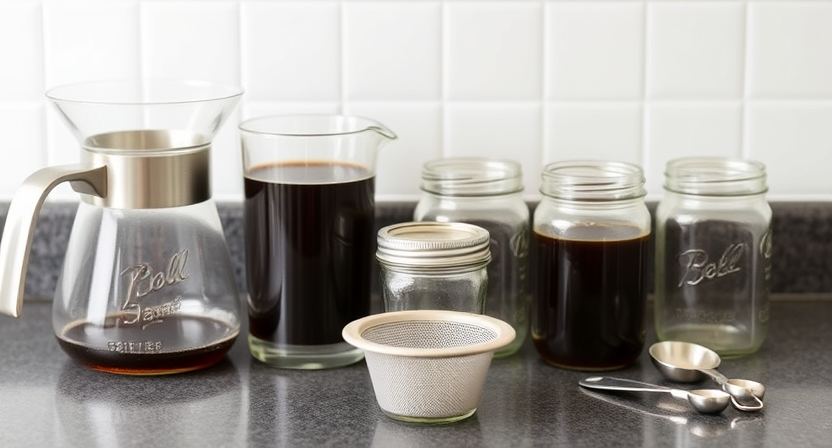
If you’re looking to make delicious cold brew coffee at home, having the right equipment is essential. One of the most popular and easiest ways to make cold brew is by using a mason jar or a large glass container. These are convenient options as they are usually found in most households and provide ample space for brewing. Additionally, you’ll need a fine mesh strainer or cheesecloth to strain the coffee grounds from the cold brew concentrate. Ensure the strainer or cheesecloth is clean to maintain the purity of the coffee.
Investing in a cold brew coffee maker can simplify the brewing process and enhance the flavor of your coffee. These specialized devices come in various sizes and styles, offering features such as built-in filters and easy pour spouts. Some cold brew coffee makers also have airtight lids, which help in the storage of the brewed coffee in the refrigerator. When selecting a cold brew coffee maker, consider factors like capacity, ease of cleaning, and the quality of the filters to ensure a smooth brewing experience.
Cold Brew Coffee on the Go: Travel Tips

When traveling, cold brew coffee can be a convenient and refreshing option to keep you energized throughout the day. To enjoy your favorite cold brew on the go, consider investing in a travel-friendly insulated tumbler or flask that will keep your drink cold for hours. This way, you can savor your cold brew at the perfect temperature no matter where you are headed.
Another tip for enjoying cold brew coffee while traveling is to prepare your own cold brew concentrate in advance and pack it in a leak-proof container. This will allow you to mix your concentrate with water or milk whenever you need a quick caffeine boost on the road. Additionally, consider exploring local coffee shops at your destination to sample different cold brew varieties and support small businesses along the way.
How to Order Cold Brew at Coffee Shops
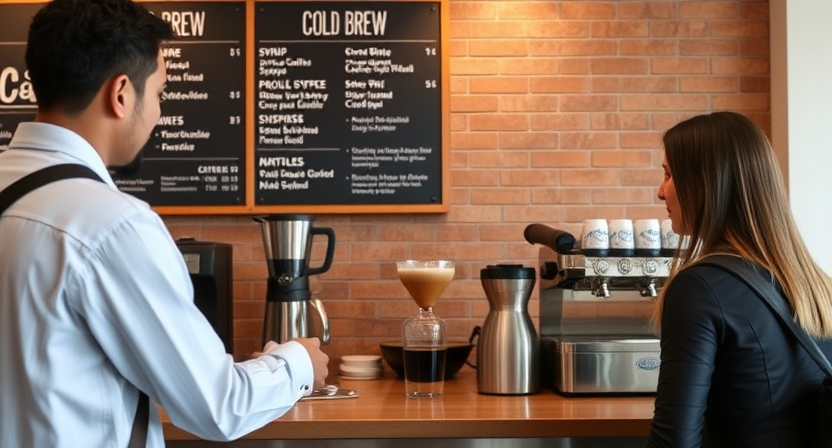
When ordering cold brew at a coffee shop, it’s important to be familiar with the variations you might encounter. Cold brew concentrate is a common offering, which is more intense in flavor and usually diluted with water or milk before serving. If you prefer a stronger taste, you can opt for the concentrate or ask for less dilution. On the other hand, if you enjoy a milder flavor, you can request extra water or milk to be added to your drink.
Additionally, some coffee shops may offer flavored syrups or dairy alternatives to enhance your cold brew experience. If you have a preference for sweetness or a specific flavor profile, don’t hesitate to inquire about the available options. Remember, customization is key when ordering cold brew at coffee shops – feel free to personalize your drink to suit your taste preferences.
Cold Brew Coffee Trends to Watch
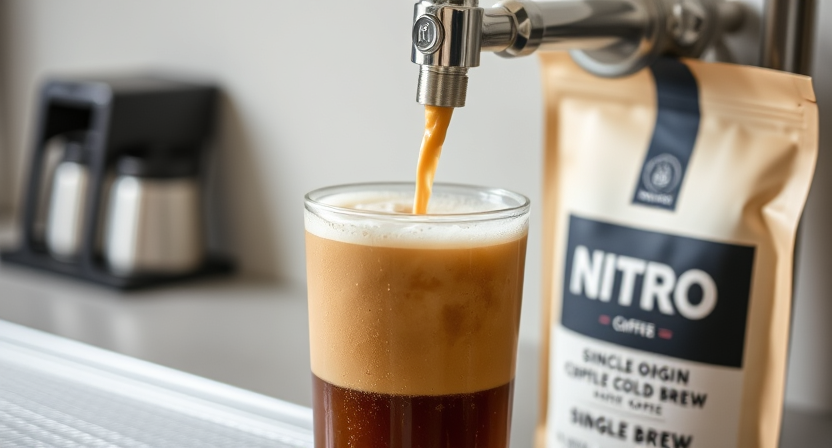
As cold brew continues to gain popularity, there are several trends emerging in the world of coffee. One of the trends to watch is the rise of nitro cold brew. Nitro cold brew is infused with nitrogen gas, creating a creamy and frothy texture similar to a stout beer. This unique preparation method enhances the coffee’s smoothness and gives it a velvety mouthfeel, making it a favorite among coffee aficionados.
Another trend on the horizon is the increased focus on single-origin cold brew coffee. Just like in the world of traditional coffee brewing, consumers are becoming more interested in the origins of their beans when it comes to cold brew. Single-origin cold brew allows coffee drinkers to experience the unique flavors and characteristics of beans from specific regions, highlighting the nuances of different growing conditions and processing methods. By showcasing the distinct profiles of individual coffee beans, single-origin cold brew offers a deeper and more personalized coffee-drinking experience.
Cold Brew Coffee and Sustainability
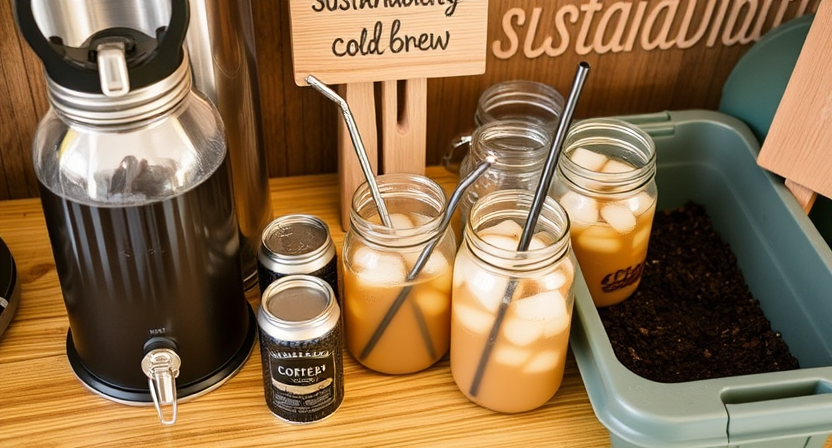
Cold brew coffee has emerged as a more sustainable option compared to traditional brewing methods due to its efficiency in water usage. The steeping process of cold brew requires significantly less water compared to hot brewing methods, where water passes through the coffee grounds multiple times. By steeping coffee grounds in water for an extended period without heat, cold brew not only conserves water but also produces less waste in the process, supporting sustainability efforts within the coffee industry.
In addition to its water-saving benefits, cold brew coffee can also contribute to sustainability through its use of coarser coffee grounds. The coarse grind size required for cold brew eliminates the need for paper filters commonly used in other brewing methods. By using metal or reusable filters to strain the coffee grounds from the liquid, cold brew reduces the consumption of single-use paper filters that contribute to landfill waste. This eco-friendly aspect of cold brew aligns with the growing consumer preference for sustainable practices in their daily coffee consumption.
Cold Brew Coffee Myths Debunked
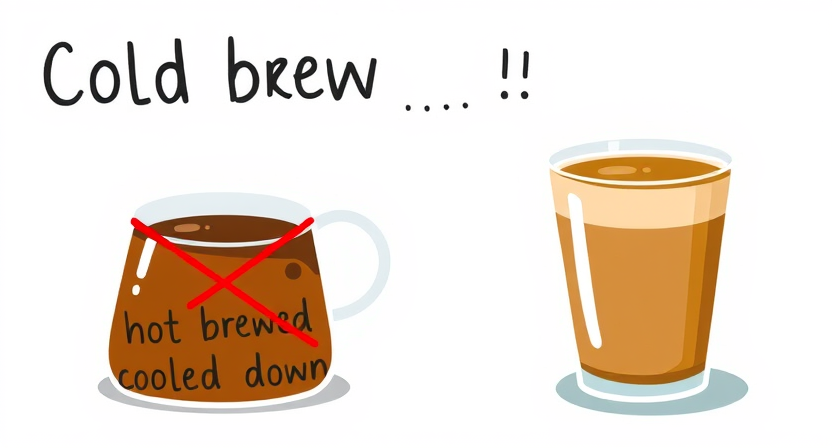
One common myth about cold brew coffee is that it is just regular coffee that has been cooled down. This is not accurate as cold brew coffee is actually brewed using cold water over an extended period of time, resulting in a smoother and less acidic flavor profile. Another misconception is that cold brew coffee has less caffeine than hot brewed coffee. In reality, cold brew coffee tends to have a higher caffeine concentration due to the longer brewing process and higher coffee-to-water ratio.
Another myth surrounding cold brew coffee is that it is difficult to make at home. While it does require some patience during the brewing process, making cold brew coffee at home is actually quite simple and doesn’t require any specialized equipment. With just coffee beans, water, a container, and a fine mesh strainer, you can easily brew your own delicious cold brew coffee to enjoy at home.
Cold Brew Coffee Substitutes for Tea Lovers

For tea lovers looking to veer into the world of coffee sans the jolt, herbal teas can be a delightful alternative to cold brew. With a similar brewing process, teas like chamomile, peppermint, or hibiscus offer a calming and refreshing experience. Their vibrant flavors and soothing aromas can provide a satisfying substitute for the smooth taste of cold brew coffee.
Another option for tea enthusiasts seeking a coffee alternative is golden milk latte. Combining turmeric, ginger, cinnamon, and other spices with warm milk, this cozy beverage offers a rich and earthy flavor profile that can complement the complexity of cold brew. The creamy texture and subtle spiciness make it a comforting choice for those craving a departure from their regular tea routine.
Incorporating Cold Brew into Your Daily Routine

For those looking to integrate the rich flavors of cold brew coffee into their daily routine, there are various simple and convenient ways to do so. One popular method is to prepare a batch of cold brew concentrate in advance, allowing for quick and easy access to a refreshing cup of coffee throughout the day. By diluting the concentrate with water or milk to your desired strength, you can customize your cold brew experience to suit your taste preferences.
Another way to incorporate cold brew into your daily routine is to experiment with adding different flavorings and sweeteners to create your own unique coffee creations. Whether it’s a dash of vanilla extract, a drizzle of caramel syrup, or a sprinkle of cinnamon, these additions can elevate the flavor profile of your cold brew and make it even more enjoyable to sip on. Plus, by making your cold brew at home, you have the flexibility to tailor each batch to match your mood and cravings.

